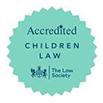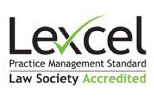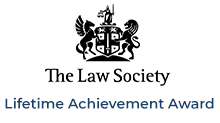Care Home Contracts and Business Practice - how to comply with CMA’s new consumer law guidance for providers

Written by: Errol Archer
After two years of examining how the care home market treats consumers, the Competition and Markets Authority has today published guidance for providers. It has the backing of the Care Minister, Caroline Dinenage who speaks of being determined to protect residents by stamping out unfair practices and secretive fees. During the market study, CMA opened investigations in June 2017 into some providers and secured undertakings from Maria Mallaband Care Group and Sunrise Senior Living Ltd.
In an open letter to providers, George Lusty, Senior Director, Consumer Protection, stresses that “CMA’s advice is there to help you comply with the law” while warning that care homes that are not complying, “risk facing enforcement action”. The CMA will work closely with Trading Standards Services and CQC to monitor and enforce compliance, so the sector needs to take action now. It should be noted that the market study looked only into residential care homes and nursing homes for people over 65 but the advice will be useful to all providers in the sector. From November 2019, CMA will carry out a compliance review to assess the progress care homes have made. Prudent providers will act on the guidance now.
Guidance documents
CMA published three documents today:
- Open letter to care home providers
- Care homes and consumer law: short guide for businesses
- Care homes: consumer law advice for providers
All three documents are on CMA’s website page here: (https://www.gov.uk/government/ations/care-homes-consumer-law-advice-for-providers)
CMA’s guidance must be taken in context. It is CMA’s current view but it is not a substitute for the underlying consumer law itself which providers must comply with and ultimately the courts, not CMA, would interpret the application of the law in individual cases. That said, providers can be left in no doubt that where CMA or Trading Standards Services (who will work closely with CQC) find that a provider is not complying with consumer law, enforcement action should be expected. The guidance applies to providers running care homes anywhere in the UK.
Overview
Whether or not you agree with the policy behind consumer law or the reach of the law itself, it is fair to say that CMA’s guidance is well drafted, thoughtfully laid out and clearly aimed at informing and assisting the sector to comply.
The guidance covers four areas, namely:
- Upfront information (see section 3 of the main guidance). It highlights “Key Informaiton” that must be provided at the outset to potential residents. This must be on websites, in brochures and/or information packs or provided at the enquirer’s first visit to home.
Key Information includes funding arrangements permissible at the home, key features of the services offered (e.g. types of care service offered, information about rooms, facilities, services available, number of beds at the home and staffing arrangements), particularly important or surprising terms and conditions (e.g. how self-funding fees may change) and fees and charges (including permissible up-front fees, how deposits will be protected and refunded, optional extras and unavoidable additional costs such as to attend medical appointments).
Important additional information (e.g. about trial periods or how residential contracts can be ended) must be provided in good time and, at the latest, by the time that a care needs assessment is carried out. A copy of the standard contract / terms and conditions must also be provided before the care needs assessment.
- Treating residents fairly (see section 4 of the main guidance). This guidance is about what providers should do to treat residents fairly and to ensure that the terms of their contracts are fair. In particular, the circumstances in which contract terms can be changed and the correct approach to adopt. The guidance focuses on revisions to a resident’s fees and gives examples of fair ways of doing this (e.g. by reference to annual increase in line with a published index) and acknowledges that changes in the law that impact significantly on providers’ costs may also be a fair justification. The guidance also highlights issues of fairness around contract termination and stresses that the guidance and law applies equally to state funded residents.
- Quality of service (see section 5 of the main guidance). Failure to provide services with reasonable care and skill may amount to a breach of contract under consumer law and be grounds for a claim for compensation by a resident. The guidance highlights the central role of the sector regulators (CQC, CSSIW, CI (Scotland) and QSHSS) but points out that compliance with the sector regulators’ standards are only one element of consumer law compliance.
- Handling complaints (see section 6 of the main guidance). There is little surprising in this section. The guidance points out the need for a written procedure that is easy to find and understand and that complaints should be handled fairly, effectively and consistently across all homes within a group.
CMA’s call to action
CMA repeats, in both its open letter to providers and the guidance, a number of steps that providers should take now:
- immediately read their advice published today (16 November 2018) (see the website link above);
- consider changes to your (i) contract and (ii) business practices that are needed;
- consider a wider review of internal procedures (e.g. website information and complaints handling);
- ensure that all customer-facing staff understand the requirements. The guidance advises training of staff on the issues raised in the guidance.
Practical steps to consider
- Allocate a senior individual within your organisation to lead on a review of compliance against the guidance (this is a task worth doing properly as it will underpin a key aspect of operations for years to come).
- Assess whether compliance can be achieved by only revising contracts and introducing the Key Information or whether a broader revision of particular policies and procedures is needed (this may be achieved by small amendments to existing documentation and/or supplementary guidance for staff using, for example, simple checklists or flow-charts).
- Consider how best to communicate any changes to residents, relatives and stakeholders and/or respond to queries.
- Consider which members of staff require training on the issues contained in the guidance and how best to deliver this.
As the guidance applies to all relevant providers in the sector, there is a level playing field. So, I would encourage providers to focus on how they can use the new guidance as a ‘good news story’ to communicate a positive message to existing and potential residents and relatives, in order to give achieve a competitive advantage.
Errol Archer Consultant Solicitor Advocate (Civil) Health & Social Care Law Expert Regulation | Compliance | Advocacy
Errol's LinkedIn can be found here.
By accepting you will be accessing a service provided by a third-party external to https://www.scomo.com/









